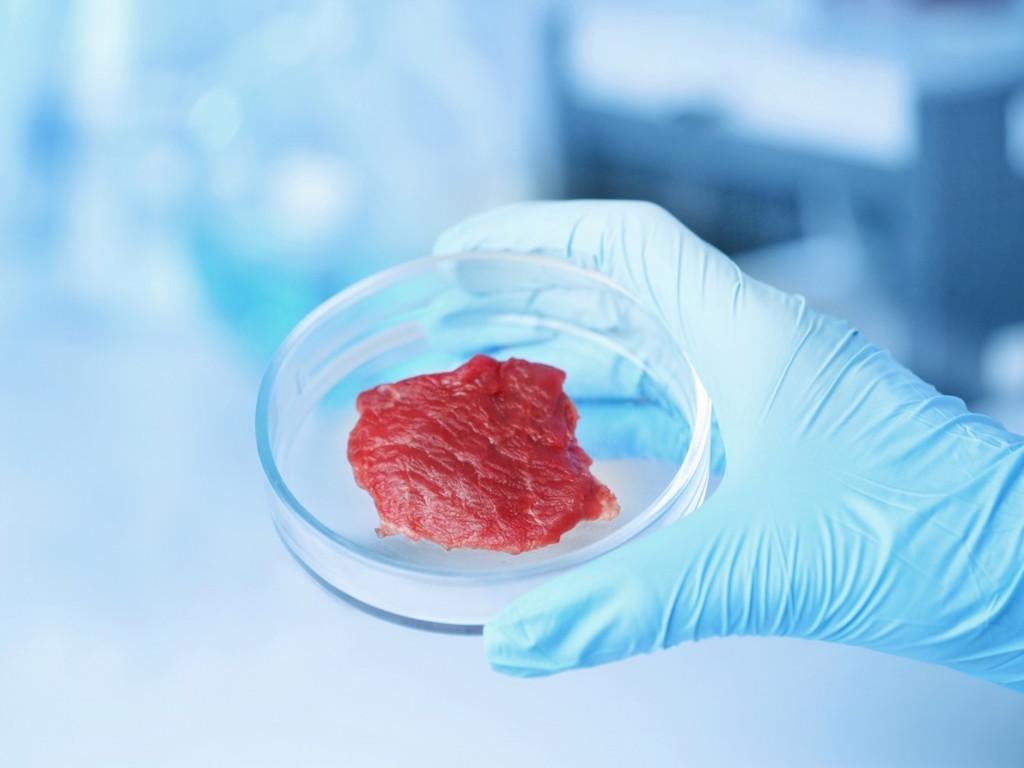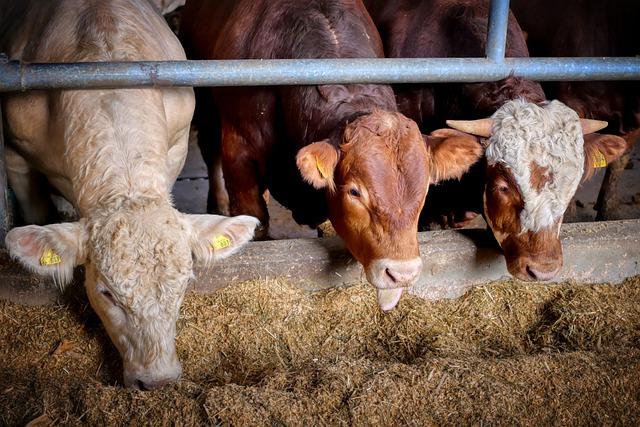We homo sapiens have been eating meat since the beginning of our existence. We have been carnivorous far back as our ancestors were beginning to roam the earth. The protein and fat content of animals were crucial to the development of humans. However, these evolutions came in an era of hunter-gathering where if you wanted some meat you had to get your spear and go hunting. Fast forward to today we can order a big mac delivery without leaving our house.
Globally we consume over 350 million tons of flesh every year. And breeding all these livestock has a huge impact on the environment and animals need to be slaughtered. What if there was a way to keep eating meat without slaughtering a single animal. While it seems far-fetched this is the reality that many scientists are working to achieve.
It is a technology involved in controversy and lots of complex economics. But many are holding on to hope that it could be the way to save our planet. Hence, lab-grown meats could replace the global need to raise and kill millions of animals and it’s a reality that many think is fast approaching. Can lab meat be economically viable enough to match our insatiable protein appetites?

Contents
What is lab-grown meat?
In essence, lab-grown meat is real flesh. It comes from the cells of an animal, just like traditional meat. Instead, it is grown in a laboratory. Today, scientists are working on perfecting the muscle tissue of cell-based meat so that it closely resembles the texture of traditionally-grown one.
In 2013, a burger was grown in a laboratory. But this burger cost $330,000 to make. Since then, it has been a race to market for dozens of food-tech startups. Lab-grown or cultured meats use practices from regenerative science to grow flesh without needing to grow an animal. It all starts with stem cells. For harvesting stem cells, scientists have to go to the primary source of the desired meat.
For steak, scientists have to take a sample of tissue directly from a cow without killing or even harming it. From this tissue, they then isolate multipotent stem cells. These are put into a bioreactor with a mixture of nutrients, amino acids, growth hormones and a special serum called FBS. These ingredients promote the cells to start replicating and keep the cells alive.

Then by adding different growth factors, scientists can induce the cells to differentiate or turn into the required type of cells like muscle or fat. The muscle cells will naturally move together to form myotubes. These tubes can then be essentially mushed together to make beef burgers. A single muscle stem cell could be grown into one trillion muscle cell tubes.
Initially, the cost of cultured meat is high. In 2013, Mosa Meats sold the first lab-grown hamburger in the US, costing $330,000. That is extremely far from a $5 fast-food item, but the company is confident that it will be able to produce a $50 chicken nugget. That’s still a ways off from $10 burgers. However, it will become more accessible as the companies get more experience.
Why do we need lab-grown meat?
Since the 1960s, the consumption of animals has doubled worldwide. And meat consumption is only set to continue as developing countries grow richer and more people can afford more protein. The top meat-eating countries like the US and Australia eat around 120 kgs per person annually. The rising demand fleshed out small-scale livestock producers into meat-churning factories. The quick and easy access to livestock is now contributing to a climate catastrophe.
While animal flesh has catered to the hunger of a wider population over the past few decades, the planet is counting the cost of that impactful obsession. One of the biggest problems facing mankind today is climate change. And livestock farming is one of the main culprits. Livestock farming accounts for up to 51% of the world’s greenhouse gas emissions, more than all other forms of transportation combined.
Additionally, climate change is posing multiple risks to human health and the environment, such as the increasing risk of droughts and other severe weather events. Indeed, climate change is often described as the number one threat to human health in the 21st century along with water scarcity. Not to mention that livestock breeding required a lot of water.

This number will even rise in the coming decades. According to the World Economic Forum, the world population is expected to be close to around 10 billion by 2050. This population boom and rising incomes will cause demand for food to rise between 59% to 98%. To feed the world’s growing demand for animal flesh, we need to find a more sustainable way of satiating this rising demand.
Another problem is that conventional livestock farming requires large amounts of land. Which makes the use of land for conventional meat production increasingly unsustainable. In the long run, the production and distribution of conventional livestock will become even more precarious and expensive as resources diminish.
Because livestock farming is one of the largest contributors to global warming, many think it’s time to cut out meat altogether from our diets. But unfortunately, it’s hard to reverse these flesh-eating trends. There’s nearly nothing that can convince people to give up something so good. So what if you still want to enjoy a steak in a backyard barbecue, without feeling guilty for the planet.
Cultured meat can satisfy meat-savvy people without the environmental or ethical worries associated with traditional animal agriculture. This means that lab-grown meat will reduce our dependence on a highly polluting industry. That’s why we need to start using this process as soon as possible. And also it could reduce the costs associated with refrigeration and transportation. This would reduce the carbon footprint and increase the efficiency of the supply chain.
Future of lab-grown meat
Lab-grown meats are cultured in the lab using cells that were originally derived from live animals. In theory, this would use fewer of the planet’s resources and no animals need to be slaughtered in the process. Cultured meat might become a regular part of our diets in the coming years. Nonetheless, the prospect raises a lot of complex social, ethical and technical questions.
Some people find the idea of eating flesh from a lab weird. While the future of lab-grown meat is promising, there are some major hurdles that the industry must overcome before it can reach the consumer market. Even though this type of meat is produced without killing the animals, it is quite expensive and will only cater to a small segment of the consumer market.
However, companies that develop the technology are focusing on perfecting the product and lowering the price point. Hence, the cost of cultured flesh may fall substantially in the next few years. But its future depends on the speed at which companies can bring their products to market.

While scientists cannot guarantee when these meat products will hit the market, they expect that they will be ready to sell. Some scientists say they are targeting the middle of the decade for commercialization but it is unclear whether they can achieve that by then. However, once the cost of production is down, they expect to see this meat on store shelves. If the cost is affordable, it may be a common addition to many people’s diets.
There’s another problem with creating this animal-free flesh. It’s not actually animal-free, the special FBS serum mentioned earlier stands for Fetal Bovine Serum which is collected from the dying fetuses of slaughtered cows. So far scientists have not found a way to create lab-grown meat without it. FBS is a serum made from the blood of pregnant cow fetuses. The fetus is removed and its blood drained while the cow dies a slow death.
Another drawback of lab-grown meat is that it does not mimic the texture and taste of real one. Most cultured meat currently available is unstructured which is fine for imitation purposes like ground meat dishes but not for preparing steaks. In the meantime, its potential is enormous
Currently, scientists are experimenting with different techniques to mimic collagen and other internal structures that make up real flesh. Some of these techniques include mushroom roots as well as textured soy protein. Some scientists are even developing lab-grown chicken and beef nuggets.
While the food industry has been skeptical about cultured livestock, the food system isn’t exactly free of problems. The FDA recognizes it as safe, but some critics argue that it is unnatural. It’s a controversial topic, so consumers should be aware of its ethical implications before committing to eating lab-grown products. Meanwhile, as the world’s population continues to increase, so does its protein consumption.
Although this method may taste slightly different than that of regular protein dishes, it still has a long way to go before it’s a regular fixture on dinner plates. It will need to become affordable, legal, logistically feasible and consumer-friendly before it’s a viable option for mass production. It will be interesting to see how this technology evolves.
Despite some potential disadvantages, the future of lab-grown meat is exciting, especially given its promise to reduce environmental costs and provide a much-needed product. Although it has many challenges, it is definitely worth the wait. if it can achieve the same nutritional value as conventional livestock, it could be the ultimate solution to meat-related problems.

0 Comments